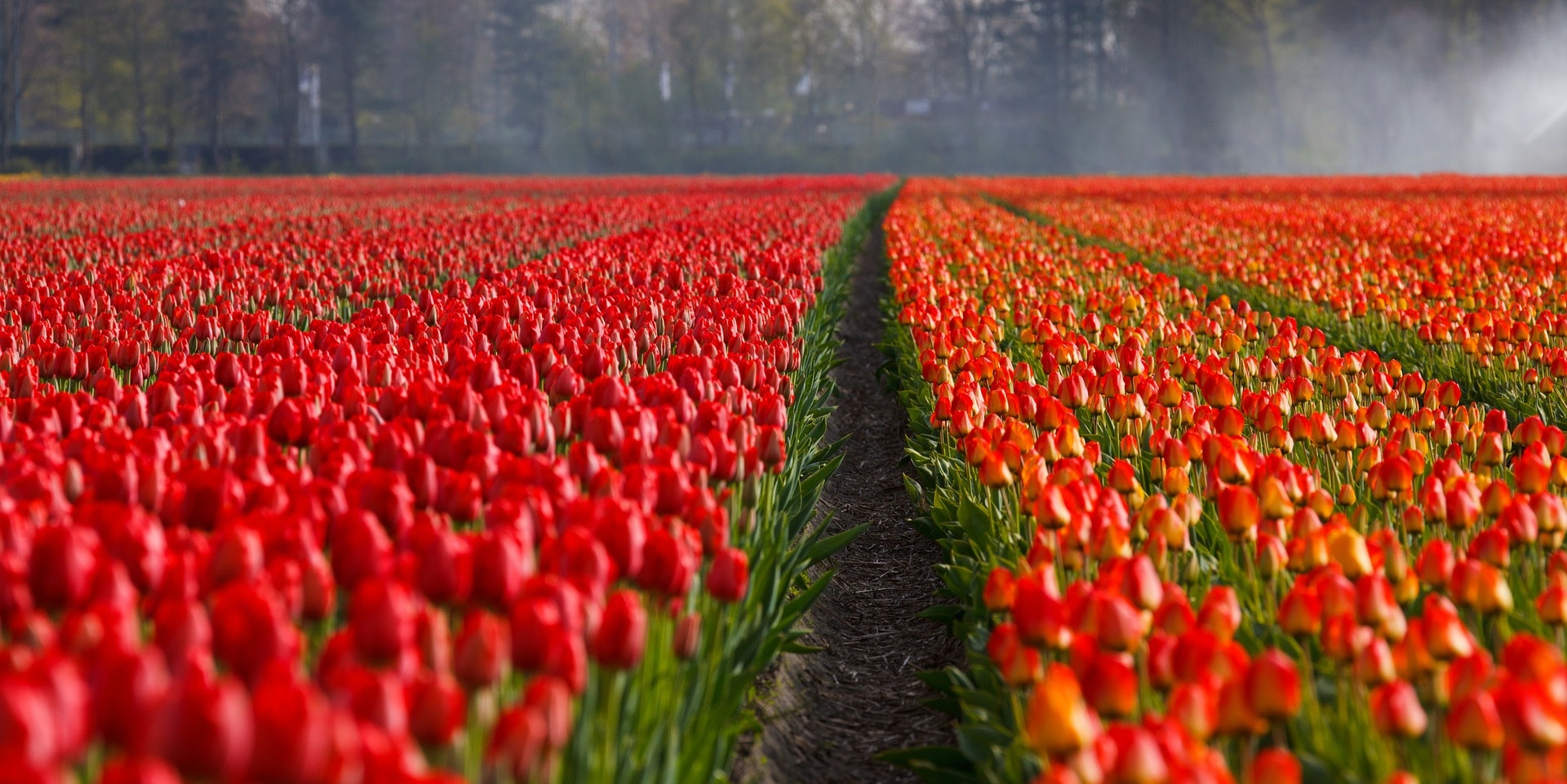Everybody associates tulips with the Netherlands, but they aren’t native there. They’re actually native to the mountains of Turkey and Russia!
Tulips were imported to the Netherlands from the Ottoman Empire in the 16th century. With Europe coming out of the Dark Ages, people were looking for the new, beautiful, and unusual. Tulips really fit the bill.
At one point, during the period known as Tulipomania, tulip bulbs were worth more than gold. People were mortgaging their homes and business to speculate in the tulip market! Some tulips were selling for as much as 5.000 guilders—the cost of a nice house in Amsterdam.
When the government stepped in, raising tulips became the solid business it is today. The Netherlands export around 2 billion tulips a year!
How to Select and Grow Tulips – It’s Easy!
To grow your own tulips is easy—and far less expensive than they were in the 16th century!
For the best selection, get your tulip bulbs early— visit the Great Big Greenhouse now while we’re fully stocked. Do not plant tulips until the soil has cooled off considerably, however—usually mid-November here in Central Virginia.
Squirrel Proof Your Bulbs
Tulips are edible–if a squirrel can get to the bulb, he’ll eat it—and invite his friends! There are things we can do about it!
Plant tulip bulbs DEEP—10 to 12 inches deep. Squirrels will dig but they do not go that far down. Plant your bulbs that deep and squirrels won’t get them. And because voles tend to tunnel in the top six inches where it’s easier to dig, they’ll usually miss the bulbs, too.
Plant a Bouquet!
A fun way to plant your bulbs is to plant a bouquet in one hole. Just tuck the tulips in the bottom layer, then cover them over to the six-inch depth. Place daffodils or hyacinths in that layer.
Cover the daffs to the “tip” of the bulbs and set crocus or mini-iris, or muscari in that layer. Then cover those bulbs to the top of the hole.
If you want to get even fancier, plant a pansy or two on top.
And, just to keep the squirrels from nosing about and disturbing the pansies, generously sprinkle crushed red pepper flakes over the whole area.
Keeping Your Bulbs From Being Lunch for Deer
For those of us with deer (me included), by putting daffodils or hyacinths in the middle layer, you’ll help protect the tulips from becoming deer food too. Daffodils are poisonous and deer don’t like the smell or taste of hyacinths. Deer smell those daffodils and leave the tulips alone.
A Big Success Tip
Another tip to ensure success with tulips: they don’t like sleeping in a wet bed. When they’re dormant, they want to be DRY. DO NOT plant them in areas where you put fast-drying summer annuals that have to be watered every couple of days in the summer. Plant them in problem areas—on sunny slopes, along that back fence where the hose doesn’t reach. They LOVE being dry all summer.
Let Me Help You Select the Best Bulbs for Your Garden!
Right now we have a great selection of tulips—and other fabulous bulbs for spring bloom.
Come in and let me help you select the best bulbs for your spring garden!

